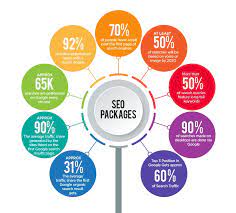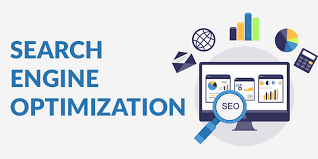The Importance of Web Page Optimization
In today’s digital age, having a strong online presence is crucial for businesses and individuals alike. One key aspect of enhancing your online presence is web page optimization. Web page optimization involves improving various elements of your website to ensure it loads quickly, ranks well in search engine results, and provides a seamless user experience.
Benefits of Web Page Optimization
Optimizing your web pages offers numerous benefits, including:
- Improved User Experience: Optimized web pages load faster and provide a smoother browsing experience for visitors, leading to higher engagement and lower bounce rates.
- Higher Search Engine Rankings: Search engines favor fast-loading websites with quality content. By optimizing your web pages, you can improve your search engine rankings and attract more organic traffic.
- Increased Conversions: A well-optimized website can lead to higher conversion rates as users are more likely to stay on your site, explore your offerings, and take desired actions.
- Mobile-Friendliness: With the increasing use of mobile devices for browsing the internet, optimizing your web pages for mobile responsiveness is essential to reach a wider audience.
Key Strategies for Web Page Optimization
Some key strategies for optimizing your web pages include:
- Optimizing Images: Compressing images and using the appropriate file formats can significantly reduce loading times without compromising quality.
- Caching: Implementing browser caching allows repeat visitors to load your website faster by storing static resources locally.
- Minifying Code: Minifying HTML, CSS, and JavaScript code helps reduce file sizes and improve loading speed.
- Responsive Design: Ensuring your website is responsive across various devices ensures a consistent user experience regardless of the screen size.
In Conclusion
In conclusion, web page optimization plays a vital role in enhancing the performance and user experience of your website. By implementing optimization strategies, you can attract more visitors, improve search engine rankings, and ultimately achieve your online goals more effectively. Invest time and effort in optimizing your web pages to reap the rewards of a successful online presence.
9 Essential Tips for Optimizing Your Web Page Performance
- Optimize images by reducing file sizes without compromising quality
- Minify CSS, JavaScript, and HTML to reduce loading times
- Enable browser caching to store frequently accessed files locally
- Use a content delivery network (CDN) to distribute content geographically
- Implement lazy loading for images and videos to improve initial load speed
- Reduce server response time by optimizing server-side processes
- Prioritize above-the-fold content to ensure faster perceived loading speed
- Enable GZIP compression to reduce the size of files sent from your server
- Regularly monitor and analyze website performance using tools like Google PageSpeed Insights
Optimize images by reducing file sizes without compromising quality
Optimizing images by reducing file sizes without compromising quality is a crucial step in web page optimization. By compressing images effectively, you can significantly improve loading times and enhance the overall user experience of your website. Utilizing the appropriate file formats and compression techniques ensures that your images maintain their visual appeal while minimizing the impact on page load speed. This strategy not only helps in boosting site performance but also contributes to higher search engine rankings and increased user engagement.
Minify CSS, JavaScript, and HTML to reduce loading times
Minifying CSS, JavaScript, and HTML is a crucial tip for web page optimization as it helps reduce loading times significantly. By removing unnecessary characters, spaces, and comments from the code, the file sizes are minimized, leading to faster loading speeds for your web pages. This optimization technique not only improves user experience by providing quicker access to content but also positively impacts search engine rankings by signaling to search engines that your website is well-structured and optimized for performance.
Enable browser caching to store frequently accessed files locally
Enabling browser caching is a valuable strategy in web page optimization. By allowing frequently accessed files to be stored locally on the user’s device, browsers can load the website more quickly upon subsequent visits. This not only enhances the user experience by reducing loading times but also conserves server resources by minimizing the need to retrieve the same files repeatedly. Browser caching is a simple yet effective way to improve website performance and ensure a smoother browsing experience for visitors.
Use a content delivery network (CDN) to distribute content geographically
Utilizing a content delivery network (CDN) to distribute content geographically is a highly effective strategy for web page optimization. By leveraging a CDN, website owners can significantly improve loading speeds and enhance user experiences by delivering content from servers located closer to the end-users. This distributed approach reduces latency, accelerates content delivery, and ensures a seamless browsing experience for visitors across various regions. Implementing a CDN not only boosts performance but also contributes to better SEO rankings and increased overall website reliability.
Implement lazy loading for images and videos to improve initial load speed
Implementing lazy loading for images and videos is a highly effective strategy to enhance the initial load speed of a web page. By utilizing lazy loading, resources such as images and videos are only loaded when they are about to be displayed on the user’s screen, rather than all at once during the initial page load. This approach significantly reduces the initial load time of the page, improving user experience by allowing content to be loaded progressively as the user scrolls down the page. Lazy loading not only boosts performance but also conserves bandwidth and improves overall site speed, making it a valuable technique for web page optimization.
Reduce server response time by optimizing server-side processes
Reducing server response time by optimizing server-side processes is a crucial tip in web page optimization. By streamlining and improving the efficiency of server-side operations, such as database queries and application logic, websites can deliver content to users more quickly. A faster server response time not only enhances user experience by reducing wait times but also contributes to improved search engine rankings, as search engines prioritize websites that load quickly. Implementing optimizations on the server side is a proactive approach to enhancing website performance and ensuring a seamless browsing experience for visitors.
Prioritize above-the-fold content to ensure faster perceived loading speed
Prioritizing above-the-fold content is a key tip in web page optimization to enhance the perceived loading speed of your website. By focusing on delivering the most important content and visuals that appear at the top of the page without requiring scrolling, you can create a faster and more engaging user experience. This approach ensures that visitors see relevant information immediately, making your website feel quicker to load and increasing user satisfaction. By optimizing above-the-fold content, you can capture users’ attention quickly and encourage them to explore further, ultimately improving your site’s performance and conversion rates.
Enable GZIP compression to reduce the size of files sent from your server
Enabling GZIP compression on your web server is a highly effective tip for web page optimization. By compressing files before sending them to the user’s browser, you can significantly reduce the size of data transferred over the network. This results in faster loading times for your web pages, as smaller file sizes require less bandwidth to download. Implementing GZIP compression can lead to improved website performance, better user experience, and ultimately higher search engine rankings due to faster loading speeds.
Regularly monitor and analyze website performance using tools like Google PageSpeed Insights
Regularly monitoring and analyzing website performance using tools like Google PageSpeed Insights is essential for maintaining a well-optimized web page. By utilizing such tools, website owners can gain valuable insights into factors affecting loading speed and overall user experience. These tools provide detailed reports on performance metrics, highlighting areas for improvement such as image optimization, code minification, and server response time. By proactively monitoring and addressing these issues, website owners can ensure their site remains fast, efficient, and user-friendly, ultimately leading to improved search engine rankings and increased visitor satisfaction.




